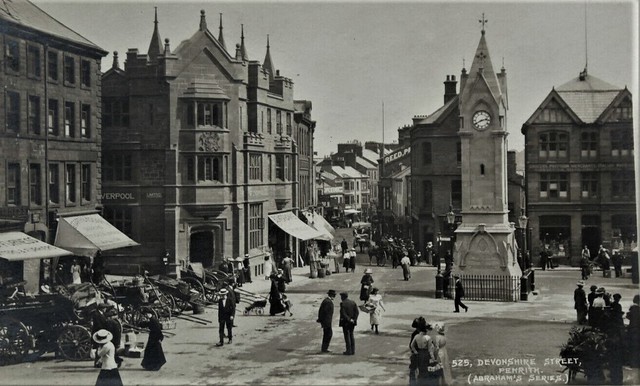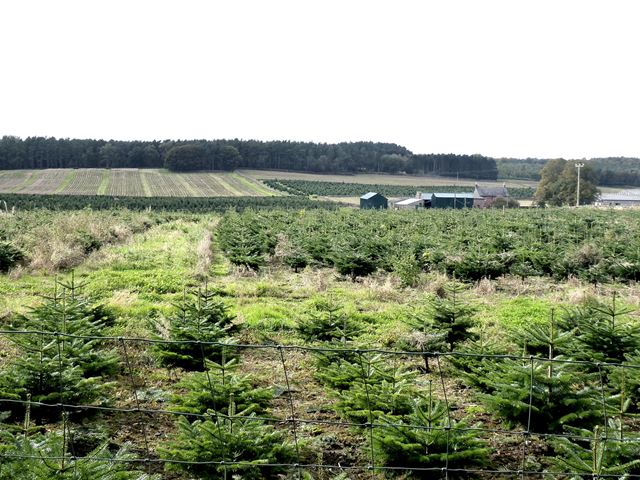Topics > Cumbria > Penrith > Penrith Parish, 1848
Penrith Parish, 1848
PENRITH (St. Andrew), a market-town and parish, and the head of a union, in Leath ward, E. division of Cumberland, 18 miles (S.E. by S.) from Carlisle, and 283 (N.N.W.) from London; containing, with the hamlets of Carleton and Plumpton-Head, and the district of Inglewood Forest, 6,429 inhabitants, of whom 6,145 are in the town. This place is of considerable antiquity: its name is evidently of British origin, and, signifying "the red hill or summit," has reference either to the nature of the adjacent soil, or to the red freestone with which the town is built. Old Penrith, the Bremetenracum of the Romans, is situated about five miles north-by-west of the present town. At the Conquest, the honour of Penrith was a royal franchise, which, after repeated changes, was assigned to Alexander III., King of Scotland, in consideration of his ceding all claim to the counties of Cumberland, Northumberland, and Westmorland, at that time the subject of frequent contests between the sovereigns of England and Scotland. From him it descended to John Baliol, on whose defection it was seized by Edward I., and given to Anthony Beck, Bishop of Durham: having repeatedly lapsed to the crown, it was granted in 1696, to William Bentinck, Earl of Portland, and was sold by the late Duke of Portland in 1783 to the Duke of Devonshire. During the reigns of Edward III. and Richard II., the town suffered greatly from the incursions of the Scots, who, in the latter reign, ravaged the country, fired towns and villages, and enslaved many of the inhabitants; but the invaders becoming infected by the plague, which then raged here, and conveying the contagion into Scotland on their return, nearly one-third of the people of that kingdom fell a sacrifice. A second visitation of the plague, in the years 1597 and 1598, swept away upwards of 2000 inhabitants of the town and parish.
The town is pleasantly seated in a fine fertile vale, which is inclosed by eminences of varied cultivation, and watered by three small rivers, the Eamont, the Lowther, and the Petteril. It consists principally of one long street, situated at the junction of the main roads from Yorkshire and Lancashire to Glasgow, and is well paved, and lighted; the houses, many of which are modern, are built chiefly of red freestone, covered with plaster and whitewashed, and roofed with slate. About the year 1400, a water-course was cut through the town from the river Petteril, to the Eamont, at the expense of William Strickland, Bishop of Carlisle. On Beacon Hill, so called from having been anciently crowned with a beacon, is a square stone edifice, erected in 1719, the windows of which command an extensive and diversified prospect, combining nearly all the varieties of landscape scenery. Towards the north is an excellent race-course, with a grand stand, where on the four last days of the first week in October, races and stag hunts are numerously and respectably attended. There are an assembly-room (occasionally used as a theatre), a bowling-green, newsroom, and subscription and circulating libraries; and the neighbourhood affords many picturesque and beautiful walks. The manufacture of checks, gingham, calico, and other cotton goods, was formerly carried on to a considerable extent, but it is now on the decline: the mineral produce of the vicinity consists of red freestone, slate, and limestone. The Lancaster and Carlisle railway has a station here, the site presenting a most commanding view of the surrounding country: some acres of ground are occupied by the buildings, coal-staiths, &c.; and closely adjoining are the venerable ruins of the castle, noticed below. The principal market, at which a large quantity of corn is pitched, is held on Tuesday, and there is a smaller one for butchers' meat on Saturday: fairs for cattle take place on March 1st, April 24th and 25th, and the third Tuesday in October; and fairs for hiring servants, on the Tuesday at Whitsuntide and at Martinmas. New shambles were erected, and the old marketcross, shambles, and moot-hall were removed from the market-place, in 1807. The markets and fairs are under the regulation of the bailiff appointed by the Duke of Devonshire, whose steward presides every third Monday at a court baron, the powers of which extend to the recovery of debts under 40s. Petty-sessions are held on alternate Tuesdays; and a quarter-session for the county, on the Tuesday in the first week after October 11th. The powers of the county debt-court of Penrith, established in 1847, extend over the registration-district of West Ward, and nearly the whole of that of Penrith. A house of correction was built in 1826, at an expense of £400, defrayed out of the county rate.
The parish comprises 7663a. 3r. 27p. The living is a vicarage, valued in the king's books at £12. 6. 3.; patron, the Bishop of Carlisle. The church, which was given by Henry I. to the see of Carlisle, then newly founded, was rebuilt, with the exception of the tower, in 1722, and is a plain, neat, and spacious edifice; the altar is placed in a semicircular recess, adorned with paintings in a very good style, and the building contains many monuments preserved from the former structure. In the churchyard are two stone monuments, called the Giant's Grave or the Giant's Legs; they are about 12 feet high, and 15 feet distant from each other, and are traditionally said to have been raised to commemorate the exploits of Sir Ewen Cæsarius, an ancient hero, against the robbers and wild boars that infested Inglewood Forest. There are places of worship for Wesleyans, the Society of Friends, Independents, Primitive Methodists, and Scottish Seceders. The free grammar school was instituted in 1340, by Bishop Strickland, who, having established a chantry here, required his chantry priest to teach music and grammar, at a salary of £6 per annum; it was refounded by Queen Elizabeth, and the endowment is at present about £30 per annum. It is entitled to share, with other schools in Westmorland and Yorkshire, in five exhibitions of £50 per annum each at Queen's College, Oxford, the bequest of Lady Elizabeth Hastings in the year 1739. The poor-law union of Penrith comprises 39 parishes or places, and contains, according to the census of 1841, a population of 20,989.
The remains of the ancient castle are westward of the town. The fabric is supposed to have been erected as a protection from the incursions of the Scots; it was repaired and enlarged by Richard, Duke of Gloucester, who resided here and was sheriff of Cumberland for five years in succession. The site favours the opinion of its having been a Roman encampment, being irregularly quadrilateral. The building exhibits no indication of very ancient date, and the ruins are remarkable more for their extent than their magnificence: the chief objects of interest are the projecting corbels in the eastern front, which appear to have supported an open corridor; there are some large vaults, which were probably prisons. The walls, broken in many places, and intersected with remaining windows, assume, from different points of view, striking varieties of perspective scenery. After the great civil war, the edifice was dismantled, and part of the materials sold. About half a mile north of Penrith is a square mount, measuring 20 yards on each side, which is generally supposed to have been used during the rebellion, as a place of execution for Scottish rebels. Three miles east-by-south of the town, on the north side of the river Eamont, are two remarkable excavations in a perpendicular rock, styled Giant's Caves, according to fabulous tradition the resisidence of Isis, a giant. On the south bank of the same river is a circular intrenchment designated King Arthur's Round Table.
Extract from: A Topographical Dictionary of England comprising the several counties, cities, boroughs, corporate and market towns, parishes, and townships..... 7th Edition, by Samuel Lewis, London, 1848.
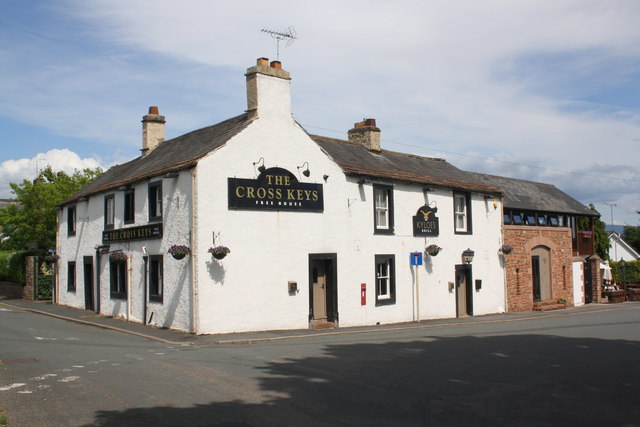
Co-Curate Page
Carleton, Penrith
- Overview About Carleton, Penrith Map Street View Carleton is a suburb of Penrith, on the eastern edge of the town, close to the River Eamont. Carleton, historically in Cumberland, developed …
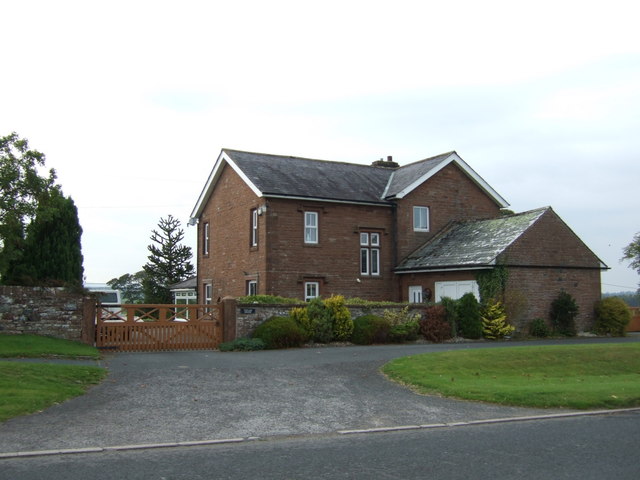
Co-Curate Page
Plumpton Head
- Overview Map Street View Plumton Head is a hamlet in Cumbria, located by the A6 road, about 3 miles north of Penrith and just over 1 mile south of the …
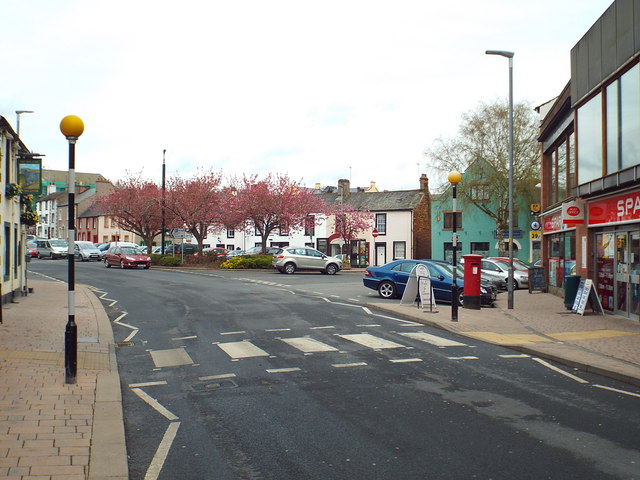
Co-Curate Page
Burrowgate
- Burrowgate, originally Burghgate, is one of the oldest streets in Penrith, it was also a division (administrative area) of the old town. Penrith's original market cross (Burrowgate Cross), once stood …


Co-Curate Page
Carleton, Penrith
- Overview About Carleton, Penrith Map Street View Carleton is a suburb of Penrith, on the eastern edge of the town, close to the River Eamont. Carleton, historically in Cumberland, developed …

Co-Curate Page
Plumpton Head
- Overview Map Street View Plumton Head is a hamlet in Cumbria, located by the A6 road, about 3 miles north of Penrith and just over 1 mile south of the …


